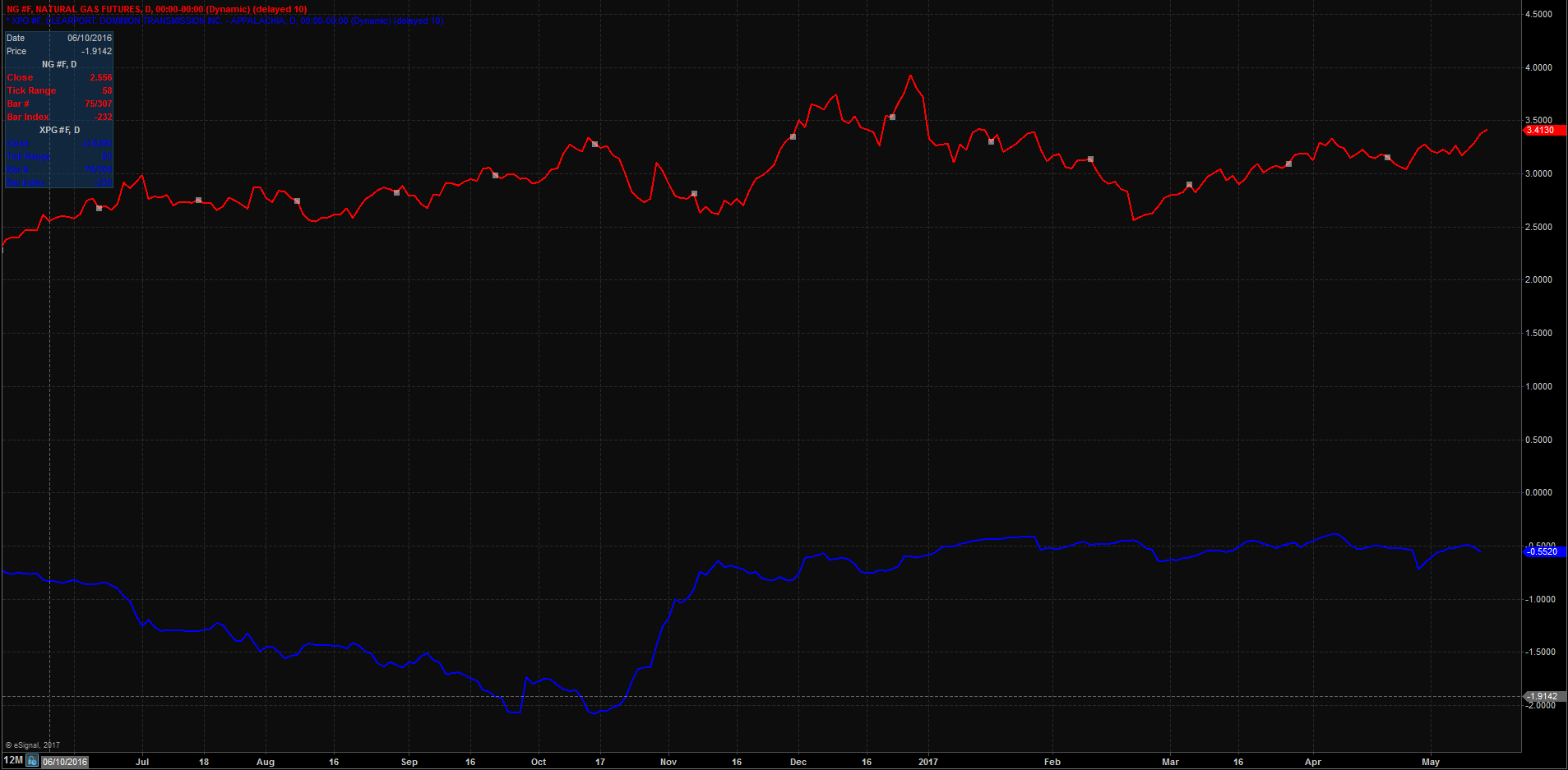Over the past year, many news articles have been written about the large natural gas reserves in Marcellus and Utica shale basins which envelop much of eastern Ohio, specifically the Dominion East Ohio (DEO) region. The regional increase in supply combined with national natural gas prices trending below the five-year average may lead some to believe that their utility bills should be going down as well. Although this may prove true in some utility regions, DEO customers may not be so lucky.
Before exploring details of this phenomenon, it is important to understand the different parts that make up your natural gas supply rate. The primary piece is the cost of the natural gas from The Henry Hub, a distribution center located in Louisiana, that is traded on The New York Mercantile Exchange (NYMEX). This is what most people refer to when discussing gas costs across the country and the first future month or prompt month is currently trading near $3.22 per Mcf.
The next component included in the rate is the basis, which refers to the mathematical difference between current prices at a hub and NYMEX. In this case, the hub is DEO. Unlike NYMEX, basis will vary drastically between utility regions. The current DEO basis is trending at -$0.559 per Mcf. Combined, NYMEX and basis will make up most of a natural gas supply rate. Although it may seem that a -$0.559 per Mcf basis would yield favorable market pricing, it is important to note that DEO basis was recently as low as -$1.46 per Mcf in the fall of 2016. Therefore, all other factors remaining equal, customers in DEO would have seen supply rates increase by nearly $1.00 per Mcf in just a few months.

Photo: eSignal; May 12, 2017; Red = NYMEX; Blue = DEO Basis.
The main driving force behind this increase is the expansion of pipelines, specifically the recently approved Rover Pipeline, that will be taking gas out of the DEO region. This new pipeline, set for construction in 2017, will be taking gas out of Marcellus and Utica shale basins and distributing it across the country. The effect of this and other pipelines can be seen on the increase in basis in DEO. As basis inches closer to zero, DEO customers should expect to see natural gas prices rise.
Ever since the discovery of the large natural gas supply in the DEO region, energy companies have been looking to gain access to these reserves. Now, with the addition of pipelines such as Rover and others, they can export this supply to other utility regions across the country. The net effect of this distribution is seen in a higher basis for DEO and decreasing basis in other regions.
